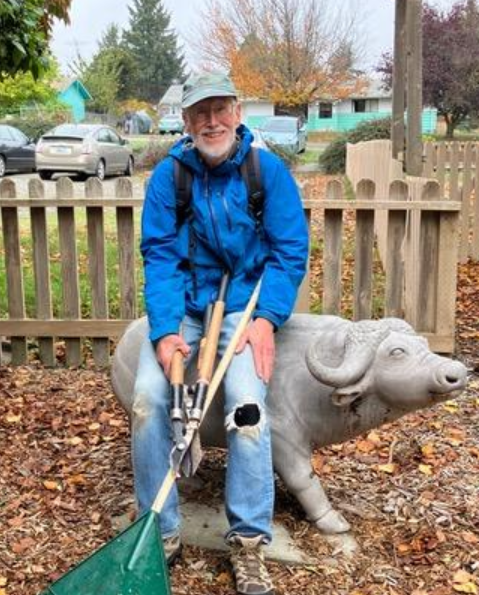Facilities Oversight and Safety

The Facilities Oversight and Safety Team (FOST) is the front line steward of QUUF’s infrastructure which includes the buildings and grounds. David Covert (see photo above, on the job) is chair of this team. FOST is a leadership group that works closely with the Custodian and Congregational Administrator in setting priorities for daily and long-term maintenance operations. This team is also tasked with providing cost estimates, resource needs, and scheduling details for larger projects as requested by the Board. Additionally, management and development of the facilities budget is tasked to this team. It includes the responsibilities of the former Safety and Risk Management (conduct an annual safety audit, maintain the Automatic External Defibrillator (AED) stored in the foyer outside the sanctuary, and hold an annual evacuation drill of the building at the end of a Sunday worship service).
Some examples of recently completed projects are:
- Designed and installed upgraded filtration for QUUF campus buildings to protect against spread of disease and allergens.
- Designed and installed video surveillance system for security purposes.
- Advised/consulted on installation of electronic door locking system.
QUUF’s Enhanced Air Filtration System
At the start of the pandemic (March 2020), when county health officials concluded that enhanced ventilation systems in buildings helped reduce the spread of the virus, the Facilities Management and Oversight Team contacted the chief engineer at Jefferson Healthcare for his insights. We then toured the hospital focusing on the design of their ventilation system.
The hospital has a forced-air system similar in concept to our “new” building (sanctuary, vestibule, kitchen, offices). This system basically heats or cools air, sends it to various rooms via ductwork, reacquires the air through return ducts, and adds additional make-up air from the outside. This air is then heated or cooled as needed and resupplied to the rooms.
In the hospital, the supply air that enters the rooms passes though an ultraviolet field in the duct. This ultraviolet field kills all microbes travelling in the air stream. Additionally, the air then passes through a HEPA (high-efficiency particulate air) filter that removes any surviving microbes. Essentially, only purified air is supplied to the rooms and contaminated air is removed and then purified. We have modelled this system at QUUF in the “new” building. We have an ultraviolet field in our supply ducts and HEPA filters installed at the initial room supply points. We are supplying clean air to all these rooms. In the “old” building (Fellowship Hall, Den, upstairs offices) we have installed individual air sterilizers using ultraviolet light and circulation fans in each room. These also reduce the chances of infection.
Be aware that this system is not 100% safe. In all cases, if an infected person expels the virus into the room, that contaminated air must be recirculated through the purification components. If an individual breathes in the contaminated air prior to it being recirculated and sterilized, the exposed person still runs the risk of infection. This is why we still require masks while we are indoors. This enhanced system improves our chances of staying safe and healthy but it does not guarantee it. It is simply another layer of safety.
This page last updated October 20, 2023
